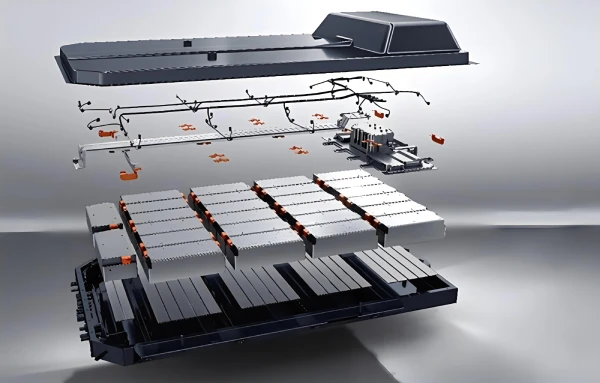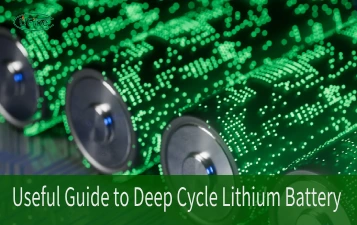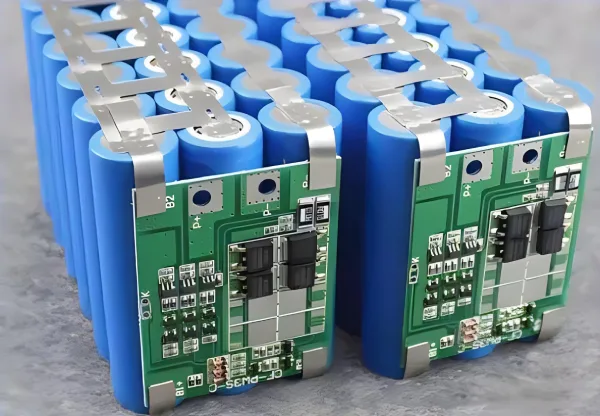Lithium-ion battery pack mainly has two meanings. The first is the processing and assembly of lithium-ion battery packs. The second type is similar to customized processing and assembly. Nowadays, the meaning of essential battery packs is the second one.
A lithium-ion battery pack mainly combines battery cells, battery protection plates, battery connecting sheets, label paper, etc., through the battery pack process to process them into the products that customers want.
Lithium-ion battery packs are now mainly concentrated in lithium-ion battery pack factories. Lithium-ion battery pack suppliers like Ufine have their pack structure design, pack electronic design, and pack production workshop and can carry out independent development and design according to customer needs.
The basic process of custom lithium battery packs is that after the battery specifications and samples meet the customer’s customized lithium-ion battery needs and are confirmed, the pack production line in the packing workshop will be produced and processed. After passing the quality inspection, it will be shipped and delivered to the customer.

Part 1. What is a lithium-ion battery pack?
First, we need to understand the general differences between lithium battery cells, batterry module, and battery packs.
- Battery cell: Battery cell is the most essential element that makes up the battery pack and pack. Generally, the voltage it can provide is between 3v-4v;
- Battery module: A collection of multiple cells to form a single physical module. This provides higher voltage and capacity;
- Battery pack: Generally composed of multiple battery modules. A battery management system (BMS) has also been added. That is the final product provided by the power manufacturer to the user.
As the core component of lithium-ion battery packs, battery cells are currently classified into three main categories based on their appearance: square case batteries, cylindrical batteries, and soft pack (polymer battery) batteries. The positive and negative electrodes of the battery are packaged into corresponding casings in different ways.
Part 2. What does a lithium-ion battery pack contain?
Lithium-ion battery packs mainly include a battery module, mechanical system, electrical system, thermal management system, and BMS.
1. Battery module
If the lithium-ion battery pack is compared to a human body, the battery module is the “heart.” It is responsible for storing and releasing energy to power electronic devices.
2. Institutional system
It is mainly composed of a battery pack upper cover, tray, various metal brackets, end plates, and bolts. It can be regarded as the “skeleton” of the battery pack, which plays the role of support, resistance to mechanical impact, mechanical vibration, and environmental protection (waterproof and dustproof).
3. Electrical system
It mainly comprises high-voltage jumpers or high-voltage wire harnesses, low-voltage wire harnesses, and relays. The high-voltage wiring harness can be regarded as the “main artery” of the lithium-ion battery pack, continuously delivering the power of the heart of the power battery system to various required components. The low-voltage wiring harness can be regarded as the “neural network” of the battery pack, transmitting detection and control signals in real-time.
4. Thermal management system
There are four main categories of thermal management systems: air cooling, water cooling, liquid cooling, and phase change materials. Take the water cooling system as an example. The thermal management system mainly consists of cooling plates, water pipes, thermal insulation, and thermal conductive pads. The thermal management system is equivalent to installing an air conditioner on the lithium-ion battery pack.
5. BMS
Battery management systems can be regarded as the “brain” of the battery, mainly composed of CMU and BMU.
CMU: Cell Monitor Unit responsible for measuring battery voltage, current, temperature, and other parameters. It also has equalization and other functions. When the CMU measures these data, it transmits them to the BMU through the battery “neural network” mentioned earlier.
BMU: Battery management unit. Responsible for evaluating the data transmitted by the CMU. If the data is abnormal, the battery is protected, a request is issued to reduce the current or the charge and discharge path is cut off to prevent the battery from exceeding the permitted usage conditions. At the same time, the battery power and temperature are also managed. According to the previously designed control strategy, the parameters and status that require warning are determined, and the warning is sent to the equipment controller and finally communicated to the equipment user.
Part 3. How to build a lithium-ion battery pack
1. Battery cell selection and matching group
Sorting and matching groups is the first step in lithium-ion battery pack manufacturing. This link is like selecting an athlete, selecting battery cells with similar performance to lay the foundation for subsequent assembly work. Through rigorous testing, including battery cell capacity, internal resistance, open circuit voltage, and many other indicators, the cells are carefully classified and grouped to ensure that the performance of each group of cells is as consistent as possible.
2. Battery cell assembly and welding
In addition, the battery core assembly and welding links closely combine the battery core with the protection circuit module (PCM) or battery management system (BMS). In this process, the cooperation of automated equipment and skilled workers is crucial. They use advanced fixtures and welding equipment to fix the cells precisely in designated positions and connect the various components firmly through precise welding techniques. In this way, a battery pack that has begun to take shape appears before our eyes.
3. Battery insulation and testing
However, the lithium-ion battery pack manufacturing process continues. The insulation and testing of semi-finished lithium battery packs follow closely to ensure the safety of the battery pack.
Workers carefully wrapped the voltage collection lines and wires with insulating materials to ensure the lithium battery pack would not cause short circuits or other safety accidents during operation.
At the same time, the strict testing process is a comprehensive inspection of the battery pack performance, including charge and discharge testing, internal resistance testing, capacity testing, and many other contents. Only battery packs that pass these tests can advance to the next step.
4. Packaging
In the packaging process of the lithium-ion battery pack, the battery pack is given a more beautiful and practical appearance. According to the design requirements, the battery pack is wrapped in exquisite packaging materials, which not only enhances the product’s overall image but also increases its durability and portability. At the same time, reasonable packaging design can also ensure the safety of the battery pack during transportation and use.
The entire lithium battery pack testing, packing, and shipping process brings a successful conclusion to the manufacturing of lithium-ion battery packs. At this stage, the battery pack undergoes a final comprehensive inspection to ensure its performance meets customer requirements and safety standards. They are then neatly packed into cartons or wooden racks, ready to embark on their journey to the customer.
Part 4. Summary
In short, battery pack manufacturing is a process entirely of technology and wisdom. From sorting and assembling to packing and shipping, every step embodies the hard work and sweat of the workers. These fine craftsmanship and strict quality control create lithium-ion battery packs with excellent performance, safety, and reliability, providing steady power for our lives.
Related Tags:
More Articles

Overview of Deep Cycle Lithium Battery
In this article, we explore the life, voltage, capacity, and charging considerations of deep cycle lithium batteries.
How Long do Lithium Batteries Last?
How long do lithium batteries last? we will explore the factors that influence the lifespan of lithium batteries and provide insights into their longevity.
How to Choose the Best LiFePO4 Battery?
Choose LiFePO4 batteries for superior performance, safety, and versatility in EVs, UPS, and backup power. This guide helps you make informed decisions.
Get 12v Lithium Car Battery As a Power Source for the Ride
Make the right choice for your vehicle's battery needs by installing a 12 volt lithium car battery. You will enjoy maintenance-free longevity with this change.
Everything About A Small Lithium Ion Battery
Discover the features, uses & future potential of a small lithium ion battery. A compact and tiny powerhouse ideal for smartphones, wearables, drones & more.






